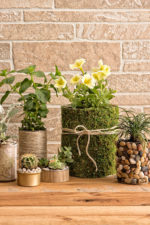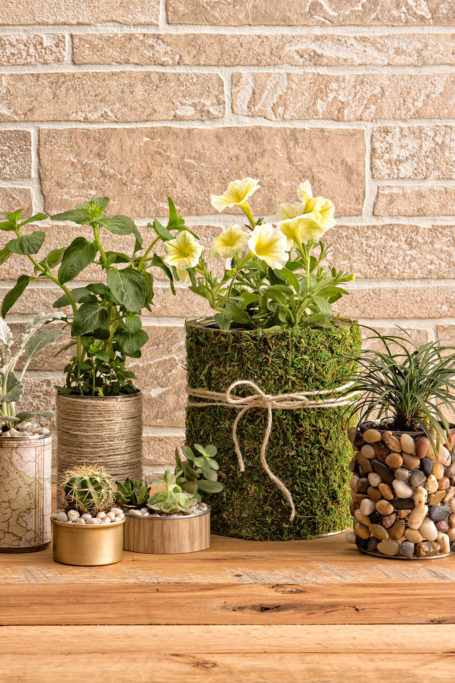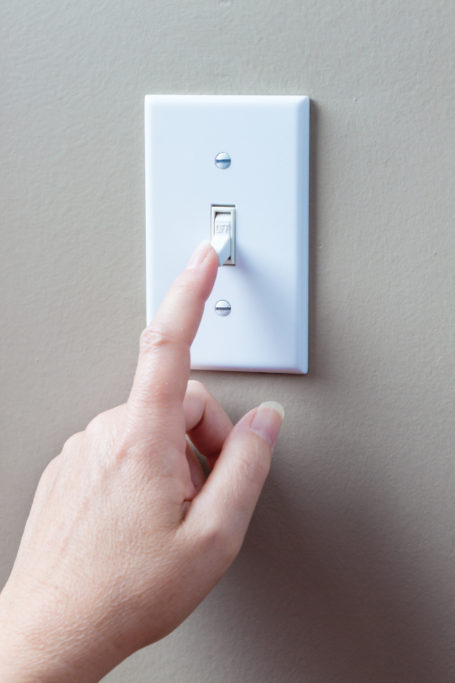Dirt-Free Gardening
Imagine stepping into your kitchen and plucking freshly grown basil leaves, tender greens, or aromatic flowers right from your counter or windowsill.
Hydroponic gardening, a soil-free technique for cultivating plants that has gained popularity in recent years, offers a convenient and economic way to grow your own oasis either indoors or outdoors. Discover how it all works along with key tips for getting started.

The basics
A time-tested method that’s been used for thousands of years, hydroponics is effective because plants actually need only a few essentials to thrive: air, nutrients, water, and light. And vegetation can get all the oxygen, food, and hydration it requires from a nutrient-rich water solution just as well as it can from the soil in a garden plot. This approach is also quite versatile—you can start a system almost anywhere, from a small space on your kitchen countertop to your front porch. Even better, it’s remarkably efficient, often yielding more crops and requiring less water than its dirtbased counterpart. One notable downside, though: you may find it more difficult to grow vegetables like potatoes or carrots that develop deep roots.
Hydroponic kits
Ready to give this technique a try? You can get started indoors by purchasing a premade system complete with everything you may need, including a garden container, a growing medium to support your vegetation and its roots, liquid plant food, and full-spectrum LED bulbs to mimic natural light. Your setup will also likely provide fast-growing seeds, such as lettuce and herbs like parsley and dill, to offer quick results. Some may even have smart alerts to let you know via an app when your plants need water or nutrients, providing virtually fail-safe gardening. You can find several such kits at various online retailers, or visit your local garden center to see what options that may provide.
While they are great for beginners, all-in-one hydroponic products do have their limitations. Perhaps the biggest is their smaller size, meaning they are ideal for cultivating shorter-growing greens and herbs but aren’t as suitable for tall, slow-growing plants like tomatoes and cucumbers.

Build your own
Once you’re comfortable with hydroponic gardening, you can expand your hobby or take your efforts outdoors by constructing your own system. A good beginner-friendly method to try is the one pioneered by horticulturist Dr. Bernard Kratky in the 1990s. Unlike complex operations that contain moving parts, this passive approach doesn’t rely on electricity or a pump to provide plants with oxygen. Instead, they are suspended in a growing medium, such as net pots, where their roots just touch a nutrient solution, receiving oxygen from the natural air gap that forms between them as the liquid level drops upon being absorbed.
There are many Kratky-style gardens you could build, but the simplest may come from YouTube gardener Mike VanDuzee of Keep on Growin’, who uses plastic buckets, pool noodles, water, and liquid plant food to cultivate everything from microgreens to zinnias. He begins by cutting the noodles into five-to-six-inch sections to hold his plants and using a two-inch hole saw to drill round openings around the sides of a lidded plastic bucket, spacing them at least four inches apart. He then puts the noodle pieces into these holes, planting the seedlings into the pieces and leaving one hole empty so he can regularly check the water level with a finger.
After construction is done, it’s just about regular maintenance. When he can no longer reach the water, VanDuzee will prepare a nutrient solution in a separate container, following the instructions on his liquid plant food package, and refill the bucket to the previous water level, allowing the plants’ roots to absorb both nutrients and oxygen as they grow. He notes that another perk of his method is that the bucket’s lid and foam-filled openings are effective at preventing pests like mosquitos from getting inside. Additionally, if you need to accommodate even more crops, you can make a second hydroponic bucket and stack it on your first.
Once you begin hydroponic gardening and see your plants thrive, you may never again want to spend your days digging in the dirt. With this simple method, you can relax while still enjoying fresh veggies and flowers all season long and beyond.


















